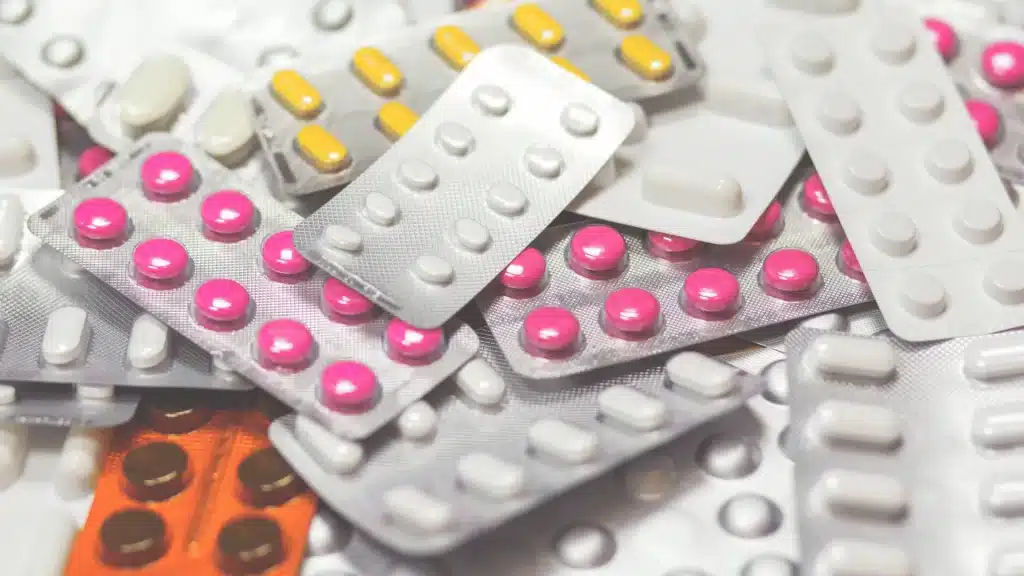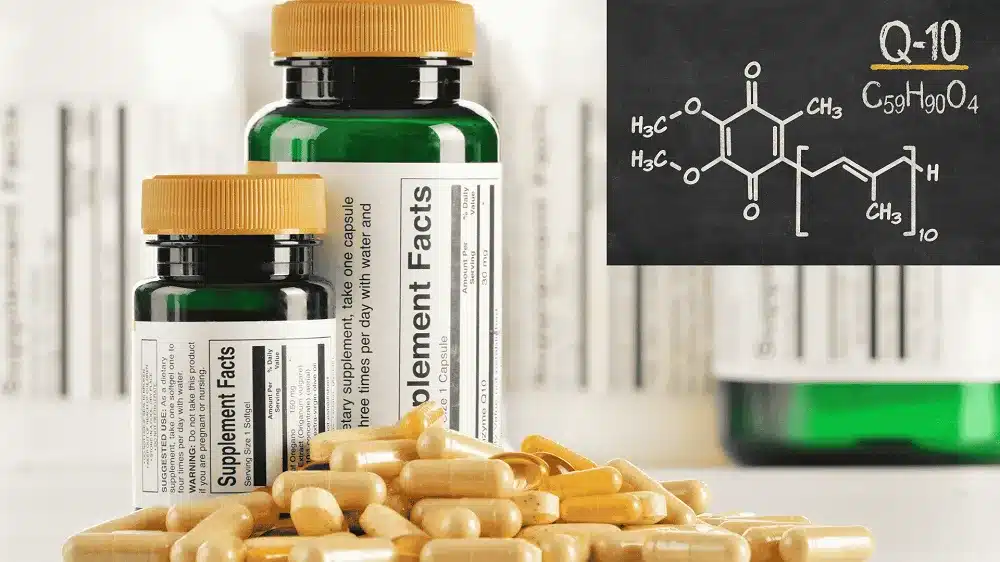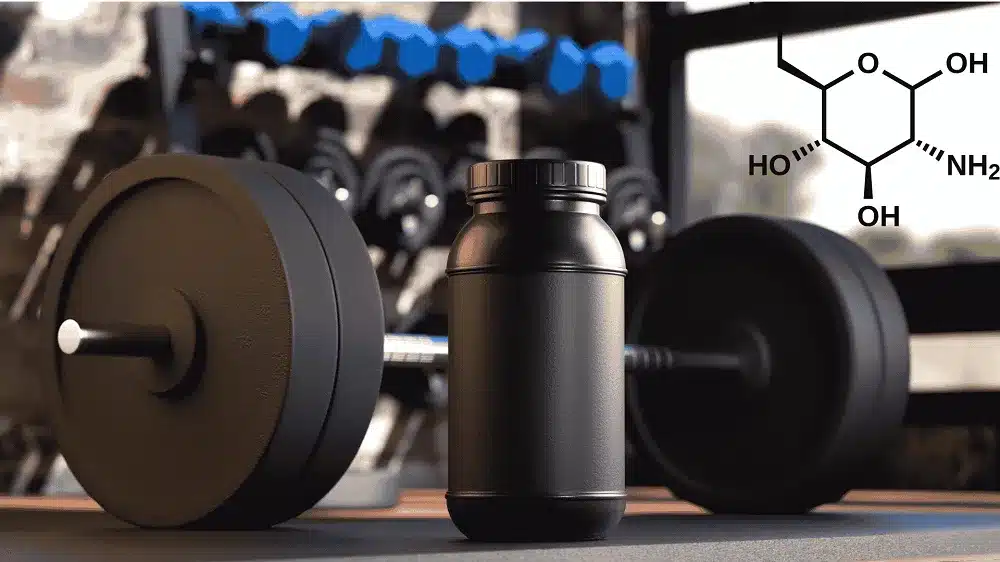In today’s health-conscious world, tablet supplement manufacturing produces small but powerful pills, like vitamin or mineral tablets, that millions rely on daily. These tablets, known for precise dosing, portability, and long shelf life, undergo a complex, scientific process to ensure safety and efficacy. This article takes you through the intricate world of tablet supplement manufacturing, exploring raw material selection, core production steps (including formulation design and testing), packaging options with pros and cons, a comparison with other supplement forms, and a real-world example. Whether you’re a health enthusiast or curious about tablet supplement manufacturing, this guide offers clear insights into the science behind these everyday products.

Introduction: Why Understanding Tablet Supplement Manufacturing Matters
Tablet supplements are solid dosage forms containing nutrients like vitamins, minerals, or herbal extracts, crafted through tablet supplement manufacturing. Unlike liquids or powders, they resist spoilage, making them a popular choice. By 2025, the global dietary supplement market exceeds $200 billion, driven by rising health awareness. However, tablet supplement manufacturing isn’t a simple task—it must adhere to strict standards, such as the U.S. FDA’s Good Manufacturing Practices (GMP) or China’s National Medical Products Administration (NMPA) regulations, to ensure safety and efficacy. Understanding this process helps you choose quality products and appreciate the precision behind tablet supplement manufacturing. Let’s dive into the steps.
Raw Material Selection: The Foundation of Tablet Supplement Manufacturing
Quality starts with raw materials. Like baking a cake with fresh flour, tablet supplement manufacturing hinges on selecting high-quality ingredients to ensure safety, efficacy, and stability.
- Active Ingredients (Core Nutrients): The “heart” of tablets, such as vitamin C (antioxidant), calcium salts (bone health), or curcumin (anti-inflammatory). Sources matter: natural (e.g., vitamin C from oranges) or synthetic (lab-made, purer but potentially less synergistic). Purity must reach 99%+ to avoid impurities. Certified suppliers ensure no heavy metals or pesticides. Sustainable sourcing, like from eco-friendly farms, reduces environmental impact but raises costs.
- Excipients (Supporting Materials): These act as “glue” or “fillers” in tablet supplement manufacturing. Common ones include:
- Fillers (e.g., microcrystalline cellulose from plant fibers) for bulk.
- Binders (e.g., polyvinylpyrrolidone, PVP) to hold powders together.
- Disintegrants (e.g., starch) for stomach dissolution.
- Lubricants (e.g., magnesium stearate) to prevent machine sticking.
Compatibility is key—some excipients may react with actives, causing degradation. Allergen-free options (e.g., gluten-free) suit broader audiences. Balancing cost and function is critical, as cheap excipients may lower absorption.
Raw materials are weighed, tested (e.g., for microbes or heavy metals), and stored. Tests like HPLC ensure purity, and microbial counts must be <100 CFU/g. This “gatekeeper” step ensures quality in tablet supplement manufacturing.
Core Steps in Tablet Supplement Manufacturing
The heart of tablet supplement manufacturing is a precise assembly line in a cleanroom (ISO 8 level) to prevent contamination. Per your request, I’ve included “formulation design” and integrated “testing” into each step for quality assurance. Each step details principles, equipment, considerations, risks, and testing, explained with analogies for clarity.

- Formulation Design in Tablet Supplement Manufacturing: The “blueprint” phase, like a chef crafting a recipe. R&D teams design the formula based on science, regulations, and market needs, setting ratios, tablet size, shape, and efficacy. For a vitamin D tablet, the formula might include: vitamin D3 (10-50mcg, 1%), microcrystalline cellulose (60%), PVP binder (5-10%), crospovidone disintegrant (3-5%), and magnesium stearate (1%). Principle: Ensure compatibility, processability, and bioavailability. Equipment: Lab-scale mixers and single-punch presses for prototyping (100-1000 tablets). Dikkate Alınması Gerekenler: Target audience (e.g., kids’ doses), regulations (e.g., China’s vitamin D limits), and stability (e.g., light protection for vitamin D). Riskler: Ingredient instability (e.g., vitamin C oxidizes in moisture) or poor ratios causing tableting issues. Testing: Accelerated stability tests (40°C/75% humidity, 1 month) and dissolution tests (USP apparatus, >85% release in gastric fluid). Failure requires reformulation, taking weeks to months. Example: A formula with >30-minute disintegration needed more disintegrant.
- Weighing and Mixing: Raw materials are precisely weighed—like a chef measuring ingredients. Principle: Achieve uniform nutrient distribution (e.g., 500mg vitamin C per tablet, <5% variation). Equipment: Electronic scales (0.01g precision) and high-shear mixers (V-blender, 50-500L, 200-500rpm, 10-30 minutes). Dikkate Alınması Gerekenler: Cleanroom (humidity <50%), protective gear; stepwise mixing for density differences. Riskler: Dust cross-contamination or static electricity affecting uniformity. Testing: Sample 10-20 points, analyze via HPLC for <5% deviation (per USP). Extend mixing if uneven. Example: Uneven cellulose distribution required 15 more minutes.
- Granulation: Fine powders are formed into granules—like turning sand into clay balls. Principle: Improve flowability and compressibility (granule size 0.5-1mm). Methods: Wet granulation (water/alcohol in fluidized bed granulator) or dry granulation (roller compactor for moisture-sensitive ingredients like vitamin B12). Wet is common for uniformity. Equipment: Fluidized bed (0.1-0.5L/min spray) or compactor (5-10MPa), 15-45 minutes. Dikkate Alınması Gerekenler: Control liquid (too much causes clumping); dry suits heat-sensitive actives. Riskler: Uneven granules or excess moisture. Testing: Hall flowmeter (<10 seconds) and sieve analysis (80% granules 0.5-1mm). Adjust if off-spec. Example: Oversized granules needed re-sieving.
- Kurutma: Wet granules are dried to prevent mold or instability—like drying clothes precisely. Principle: Remove moisture, targeting 2-5%, preserving actives. Equipment: Fluidized bed dryers/ovens (40-60°C, e.g., vitamin C <50°C), 1-4 hours. Dikkate Alınması Gerekenler: Uniform heating; low temperatures for sensitive actives (e.g., enzymes). Riskler: Overheating degrades nutrients; residual moisture fosters microbes. Testing: Karl Fischer titration (<5% moisture), HPLC (>95% active retention). Extend drying if needed. Example: 7% moisture batch needed 30 more minutes.
- Sieving and Milling: Granules are sized—like sifting flour. Principle: Optimize size distribution for mold filling. Equipment: Vibrating sieves (0.5-2mm mesh) and hammer mills, 5-15 minutes. Dikkate Alınması Gerekenler: Avoid over-milling (>20% fines hinder tableting). Riskler: Dust or over-milling reduces yield. Testing: Laser particle size analyzer (80% in range), microscope for foreign particles. Recycle off-spec granules. Example: 25% fines required re-sieving.
- Tableting: Granules are compressed in a rotary press—like stamping a seal. Principle: Pressure binds granules into tablets (hardness 4-8kg). Equipment: Rotary presses (500-2000 tablets/min), molds for shape (round/oval, 3-5mm thick). Dikkate Alınması Gerekenler: Lubricants prevent “sticking”; excess pressure makes tablets too hard. Riskler: Cracks, weight variation, mold wear. Testing: Inline weight monitoring (<5% deviation), hardness (4-8kg), and thickness (±0.1mm) tests. Adjust pressure/lubricant if needed. Example: 3kg hardness batch needed more binder.
- Coating (if applicable): Tablets are coated—like waxing an apple—for appearance, taste-masking, or controlled release (e.g., enteric coating). Principle: Add a protective layer. Equipment: Coating pans/spray coaters (hydroxypropyl methylcellulose, 20-100μm), 1-3 hours. Dikkate Alınması Gerekenler: Even coating; food-grade materials. Riskler: Peeling or thick coatings slow dissolution. Testing: Inspect gloss/thickness (microscope), test release profiles (e.g., 50% in 4 hours for sustained-release). Polish and print (e.g., laser branding). Example: Uneven coating needed spray speed adjustment.
- Quality Control in Tablet Supplement Manufacturing:Beyond step-specific tests, final batch testing includes dissolution (>85%), disintegration (<30 minutes), hardness (4-8kg), microbial purity (<100 CFU/g), and stability (40°C/75% humidity, 6 months). USP or Chinese Pharmacopoeia standards are mandatory; failing batches are destroyed. Example: A 70% dissolution batch required reformulation.
- Packaging and Storage Options in Tablet Supplement Manufacturing
Packaging impacts shelf life and user experience. Options include bottles, blister packs, and foil pouches:
| Ambalaj Türü | Artıları | Eksiler |
|---|---|---|
| Şişeler (Plastic/Glass) | Cost-effective, bulk-friendly; reusable; clear labeling. | Moisture-prone (needs desiccant); contamination risk post-opening; bulky. |
| Blister Paketler | Superior moisture/light protection; portable; single-dose purity; precise dosing. | Higher cost; less recyclable; harder to open. |
| Folyo Torbalar | Lightweight, space-saving; good oxidation barrier; sustainable options. | Damage-prone; less premium; limited label space. |
Selection depends on the product: omega-3 uses blisters for oxidation protection; daily vitamins use bottles for economy. Store in cool, dry conditions (15-25°C), avoiding light. Labels list ingredients, expiration, and warnings (e.g., “Keep out of reach of children”).

Tablet Supplement Manufacturing vs. Other Forms
Tablets are popular, but how do they compare to capsules, powders, liquids, and gummies? This table evaluates manufacturing complexity, cost, convenience, absorption, stability, taste, and use cases:
| Aspect | Tablet | Kapsül | Toz | Sıvı | Sakızlı |
|---|---|---|---|---|---|
| Manufacturing Complexity | Moderate: Formulation, tableting, coating; high equipment costs, efficient for scale. | Moderate: Filling shells, needs precision. | Low: Simple mixing/drying, scalable. | Moderate: Stabilizers, sterilization needed. | High: Complex molding, flavor tuning. |
| Maliyet | Low: High material efficiency, simple packaging. | Moderate: Shells add cost. | Lowest: No molding. | Moderate: Special bottles, high transport costs. | High: Additives, long production cycle. |
| Kolaylık | High: Portable, no tools needed. | High: Easy to swallow, odorless. | Moderate: Needs water, less portable. | Low: Spill-prone, needs measuring. | High: Fun, kid-friendly. |
| Absorpsiyon | Moderate: Needs disintegration, coating controls release. | High: Quick dissolution, ideal for oils. | High: Water-dissolved, fast uptake. | Highest: No disintegration, high bioavailability. | Moderate: Chewed, sugar may interfere. |
| Stability/Shelf Life | High: Solid, moisture/light-resistant, 2-3 years. | High: Sealed, suits sensitive ingredients. | Moderate: Moisture-prone, needs sealing. | Low: Oxidation/microbe risk, short shelf life. | Moderate: Sticky in humidity. |
| Taste/Acceptance | Moderate: Bitter, coating helps; needs water. | High: Tasteless, easy to swallow. | Low: Powdery, needs flavoring. | Moderate: Flavored, strong taste possible. | Highest: Sweet, fun, high calorie. |
| Kullanım Örnekleri | Daily vitamins, precise dosing. | Oil-based nutrients (fish oil), sensitive stomachs. | Fitness powders (protein), flexible doses. | Kids/elderly liquids, fast effects. | Fun calcium gummies, pill-averse users. |
| Dezavantajlar | Swallowing issues; slower disintegration. | Non-vegan shells; breakage risk. | Inaccurate dosing; dusty. | Inconvenient, perishable. | High sugar; less precise dosing. |
Analysis: Tablet supplement manufacturing offers cost, stability, and convenience, ideal for daily use, but absorption is slower than liquids/powders. Capsules suit oils, liquids offer fast uptake, powders allow flexible dosing, and gummies appeal to pill-averse users. Choose based on needs—e.g., vitamin C tablets for portability, liquids for athletes.
Example: Vitamin C Tablet Manufacturing from Start to Finish
For a 500mg vitamin C tablet:
- Formulation Design: Synthetic vitamin C (99.5% purity), excipients (60% cellulose, 8% PVP, 5% crospovidone, 1% magnesium stearate). Goal: <15-minute disintegration, 2-year shelf life. Optimized via stability tests (>90% release).
- Raw Material Preparation: Source 50kg vitamin C, 150kg excipients, pass HPLC/microbial tests.
- Core Manufacturing:
- Mix 30 minutes (HPLC <4% deviation).
- Wet granulate for 0.5-1mm granules (flow <8 seconds).
- Dry to 3% moisture (Karl Fischer, >98% retention).
- Sieve for 80% target granules.
- Press 1g tablets (5kg hardness, <3% deviation).
- Orange coating for taste (95% dissolution).
- Kalite Kontrol: 96% dissolution, 12-minute disintegration, <50 CFU/g, meets Chinese Pharmacopoeia.
- Paketleme: Blister packs (10 tablets/board); label: “1 tablet daily for immunity.”
- Finished Product: ~1 week from formulation to market, ready for purchase.
This example highlights the precision of tablet supplement manufacturing. We hope this builds your confidence in supplements! Ask for more details if needed.
Tablet Supplement Manufacturing Summary
Tablet supplement manufacturing transforms raw materials into precise, portable tablets like vitamin C or calcium supplements through a scientific process. Starting with high-quality active ingredients (e.g., vitamins) and excipients (e.g., fillers), the process involves formulation design, weighing, mixing, granulation, drying, sieving, tableting, and coating, with rigorous testing at each step to ensure uniformity, stability, and efficacy. Packaging options like bottles or blister packs balance cost, portability, and shelf life. Compared to capsules, powders, liquids, and gummies, tablets excel in stability and cost but have slower absorption. A vitamin C tablet example illustrates the journey from formulation to finished product, meeting standards like USP or China’s NMPA.
citations
- Market Data
Text: “By 2025, the global dietary supplement market exceeds $200 billion…”
Kaynak: Superior Supplement Manufacturing
Bağlantı: FDA Registered Supplement Manufacturer Guide
Note: Supports market size claim with projected growth to $194.6 billion by 2030. - Regulations
Text: “…adhere to strict standards, such as the U.S. FDA’s Good Manufacturing Practices (GMP) or China’s NMPA…”
Kaynaklar:
- FDA CGMPs: FDA CGMPs for Dietary Supplements
Note: Details FDA GMP rules for supplements.
- Kalite Kontrol
Text: “Standards like USP or Chinese Pharmacopoeia are mandatory…”
Kaynaklar:
- FDA CGMP Standards: Navigating FDA’s cGMP Standards
Note: Highlights testing in GMP compliance. - FDA Quality System: FDA Quality System Regulation
Note: Details quality testing standards.
- Historical Case
Text: “A 2010s heavy metal recall underscores compliance importance.”
Kaynak: FDA Warning Letters
Bağlantı: FDA Warning Letters
Note: Lists recalls, including heavy metal cases.



